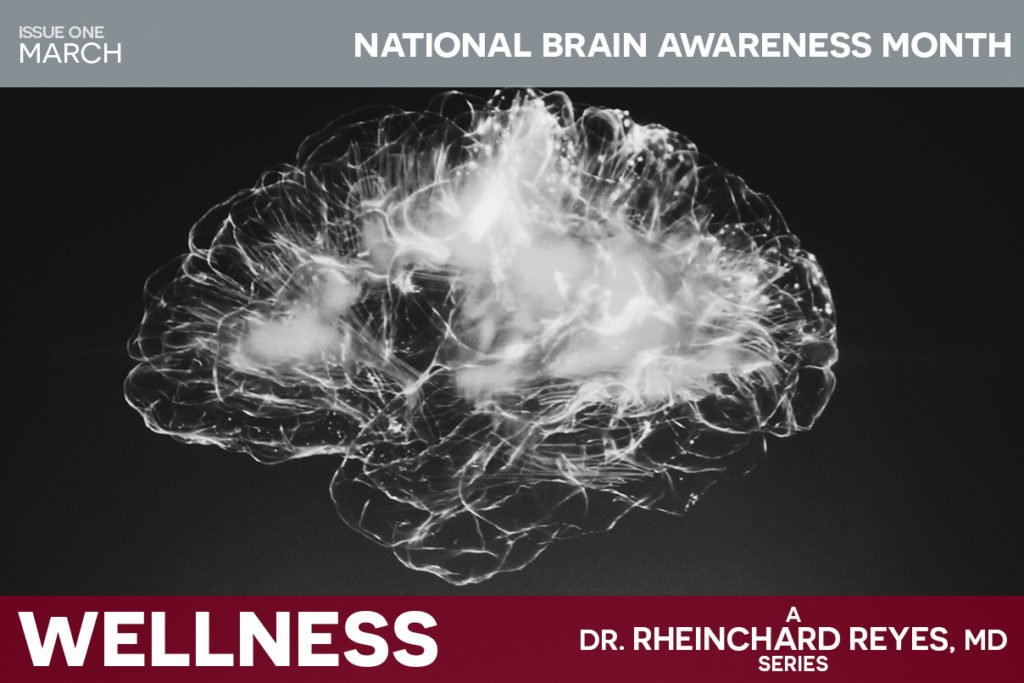Brain Awareness Week (aka, BAW) is a global initiative of Dana Alliance for Brain Initiatives (DABI) and the European Dana Alliance for the Brain (EDAB) under the general coordination of The Dana Foundation. It is designed to raise public awareness concerning the progress and the benefits of brain research.
This week-long celebration of the brain takes place on March every year.
In 2019, it starts next Monday, March 11, and ends on Sunday, March 17.
BAW: Beginnings to Today
BAW took flight in 1996 in the United States, with just 160 participating organizations, including a score of different interest groups from academia, government, as well as professional and advocacy organizations.
Vision: Brain research fosters treatment, prevention, and tentative cures for brain diseases and disorders, ensuring a better quality of life for patients of all ages.
In its 23 years of life, BAW has become a global effort with over 5,600 partners in 120 countries worldwide. These partners include universities and colleges, hospitals, K-12 schools, advocacy groups, outreach and educational organizations, medical research facilities, professional organizations, senior centers, libraries, government agencies, corporations, and many more. The 2018 campaign alone saw 895+ events in 42 countries and 44 states at home.
Just access the Dana website referenced below (Sources) for all necessary information, including a list of Partners, the Week’s Calendar, Tips and Resources, and Popular Events near you—such as lectures, open days, fairs, displays, competitions, workshops, social media campaigns, exhibitions, etc.
This blog’s honest contribution to Brain Week is a general overview of two brain conditions important enough to highlight at this time.
- Hypertension Stroke
- Chronic Traumatic Encephalopathy or CTE
Hypertension & Stroke
Well, hypertension is the scientific name for what we commonly refer to as high blood pressure. Blood pressure is defined as a measure of how strongly the blood presses against artery walls.
Under the new definition of hypertension (130 over 80 vs 140 over 90), the American Heart Association (AHA) estimates that 103 million adult Americans suffer from this condition. That’s nearly half of the adult population, having leaped from 32% to 46%. AHA projects 795,000 cases of stroke this year alone.
So, what causes high blood pressure?
- Age: more common in people 65+ years old
- Lifestyle factors: being obese or overweight, smoking, excessive drinking, unhealthy eating habits, or not exercising
- Underlying health problems: sleep apnea, kidney disease, and others
- Preeclampsia: raises the blood pressure of pregnant women
- Family history
- Ethnicity: more common in African-Caribbean people, for example
The population may suffer two types of strokes owing to hypertension.
- Ischemic stroke: due to a blockage from poor blood circulation, it may lead to a stroke or a mini stroke, or TIA, transient ischemic attack
- Hemorrhagic stroke: stress causes weakened blood vessels to burst and bleed inside your head
The most important recommendation, of course, is get checked by a professional now and regularly. If need be, you will be offered medication, as well as a list of lifestyle changes you must enact.
Chronic Traumatic Encephalopathy
CTE is a degenerative brain disease first diagnosed in 1928. A protein by the name of Tau forms clumps that spread throughout the brain and kill brain cells.
It is mainly —but not just— seen in athletes, military veterans, and others with a history of repetitive brain trauma.
|
CTE Candidates |
Head Impact |
|
Boxers |
Blows to the head |
|
Tackle football players |
Bows to the helmet |
|
Soccer players |
Collision headers |
|
Ice hockey players |
Fighting, checking |
|
Military veterans |
Combat & blast injuries |
|
Victims of domestic abuse |
Repeated violence |
Early symptoms tend to appear in the late 20s and early 30s, and include:
- impulse control problems
- aggression
- depression
- paranoia
As the disease progresses the symptoms are more likely to show:
- memory loss
- confusion
- impaired judgment
- progressive dementia
If you have a history of repeated head trauma or concussions, this means you are at risk of CTE. Although it can only be diagnosed after death by analyzing brain tissue, ongoing research and growing knowledge of this pathology means neuropathologists familiar with brain diseases are now able to accurately identify the symptoms via a given set of diagnostic criteria.
Sources:
- http://www.dana.org/BAW/
- https://www.stroke.org.uk/sites/default/files/user_profile/high_blood_pressure_and_stroke.pdf
- https://concussionfoundation.org/CTE-resources/what-is-CTE
- https://www.heart.org/en/news/2018/05/01/more-than-100-million-americans-have-high-blood-pressure-aha-says



